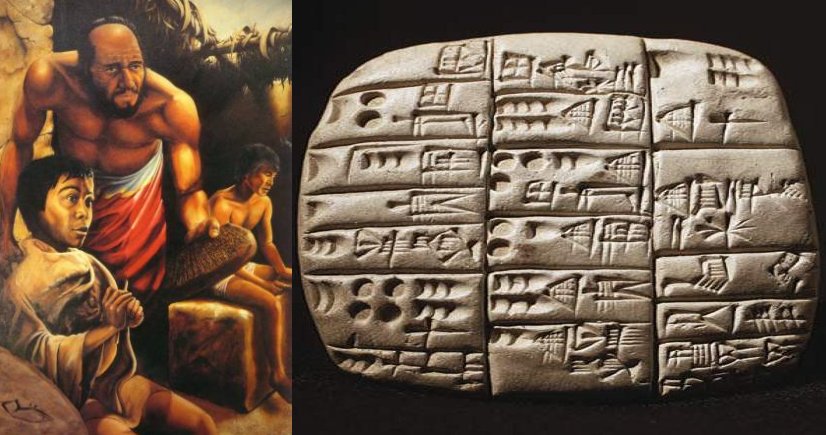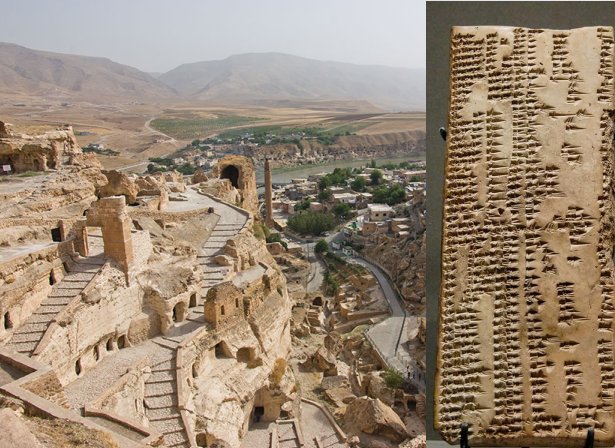World’s Oldest Dictionaries Are 4,500-Year-Old Cuneiform Tablets Discovered In Ebla
Ellen Lloyd - AncientPages.com - World’s oldest dictionaries come from the Akkadian Empire. The dictionaries are about 4,500-year-old and were discovered in Ebla, one of the earliest kingdoms in Syria. They written on cuneiform tablets and are part of the famous ancient Ebla archive.
The text is written in the oldest Semitic language yet identified and deciphered with oldest know bilingual dictionary, written in Sumerian (a language already deciphered) and Elbaite. The Elbaites wrote in columns and used both sides of the tablets. Lists of figures were separated from the totals by a blank column. Treaties, descriptions of wars, and anthems to the gods were also recorded on tablets.
The Urra=hubullu glossary, a major Babylonian glossary or encyclopedia from the second millennium BCE, preserved in the Louvre Museum in Paris.
By 2500 B.C. Sumerian scribes could write almost anything with 800 or so cuneiform signs, including myths, fables, essays, hymns, proverbs, epic poetry, lamentations, laws, lists of astronomical events, list of plants and animals, medical texts with lists ailments, and use of herbs.
See also:
Sumerian King List – Ancient Record Of Kingship That Has Long Been Of Great Interest
What Did Houses For Ordinary People In Sumer Look Like?
Food And Clothing Of Middle Class Of The Sumerian Society
More Fascinating Ancient History Facts
In the 1970s, as many as 15,000 clay tablets were discovered in northern Syria. One of the most famous Sumerian tablets contains a story about a great flood that destroyed Sumer. It is virtually the same story ascribed to Noah in the Old Testament. The same tablets also contain The Story of Gilgamesh.
The Sumerians, Babylonians, and Eblaites had large libraries of clay tablets. Cuneiform was used by speakers of 15 languages over 3,000 years.
With the advancement of education, the Sumerian schools developed into cultural centers of the state.
The Urra=hubullu glossary, a major Babylonian glossary or encyclopedia from the second millennium BCE, preserved in the Louvre Museum in Paris, is an excellent example of this early form of wordlist.
A Chinese dictionary, the c. 3rd century BCE Erya was the earliest surviving monolingual dictionary; although some sources cite the c. 800 BCE Shizhoupian as a "dictionary", modern scholarship considers it a calligraphic compendium of Chinese characters from Zhou dynasty bronzes.
Written by: Ellen Lloyd AncientPages.com
Copyright © AncientPages.com All rights reserved. This material may not be published, broadcast, rewritten, or redistributed in whole or part without the express written permission of AncientPages.com
More From Ancient Pages
-
 Why Did King Solomon Hide Advanced Technology In A Secret Place? – The Great Deception – Part 2
Featured Stories | Apr 3, 2021
Why Did King Solomon Hide Advanced Technology In A Secret Place? – The Great Deception – Part 2
Featured Stories | Apr 3, 2021 -
 Enigma Of Lycurgus Of Sparta – Great Reformer And His Foundation Of A Warlike Superior State
Featured Stories | Jan 9, 2023
Enigma Of Lycurgus Of Sparta – Great Reformer And His Foundation Of A Warlike Superior State
Featured Stories | Jan 9, 2023 -
 Codex Washingtonianus Contains A Passage Not Seen In Any Other Biblical Manuscript
Artifacts | Aug 4, 2015
Codex Washingtonianus Contains A Passage Not Seen In Any Other Biblical Manuscript
Artifacts | Aug 4, 2015 -
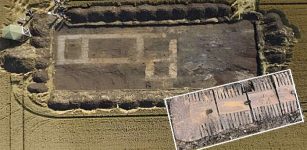 Lincolnshire’s Prehistoric Henge And A Sacred Site Dating Back Hundreds Of Years
Archaeology | Apr 6, 2024
Lincolnshire’s Prehistoric Henge And A Sacred Site Dating Back Hundreds Of Years
Archaeology | Apr 6, 2024 -
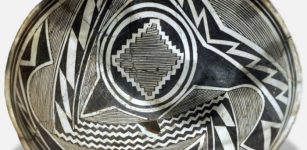 Expressive Beautiful And Celebrated Bowls Created By Mimbres Artisans From Distant Past
Artifacts | Oct 9, 2023
Expressive Beautiful And Celebrated Bowls Created By Mimbres Artisans From Distant Past
Artifacts | Oct 9, 2023 -
 Unique 8,000 Year-Old Child Burial Reveals Its Secrets
Archaeology | Nov 3, 2020
Unique 8,000 Year-Old Child Burial Reveals Its Secrets
Archaeology | Nov 3, 2020 -
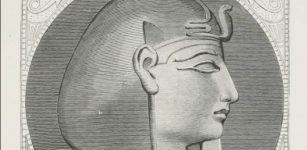 Pharaoh Merneptah – His Giant Sarcophagus And Unique Victory Stele
Featured Stories | Apr 17, 2018
Pharaoh Merneptah – His Giant Sarcophagus And Unique Victory Stele
Featured Stories | Apr 17, 2018 -
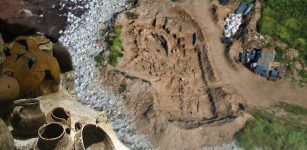 Ancient Pottery Found On The European Atlantic Coast Sheds Light On Cooking In The Bronze Age
Archaeology | Jan 16, 2024
Ancient Pottery Found On The European Atlantic Coast Sheds Light On Cooking In The Bronze Age
Archaeology | Jan 16, 2024 -
 Lost City Of Alexander The Great Found After 2,000 Years In Iraq
Archaeology | Oct 1, 2017
Lost City Of Alexander The Great Found After 2,000 Years In Iraq
Archaeology | Oct 1, 2017 -
 9,000-Years-Old Underwater Artifacts Found Off The Western Australia Pilbara Coast – Protect Flying Foam Passage Scientists Say
Archaeology | Jun 27, 2023
9,000-Years-Old Underwater Artifacts Found Off The Western Australia Pilbara Coast – Protect Flying Foam Passage Scientists Say
Archaeology | Jun 27, 2023 -
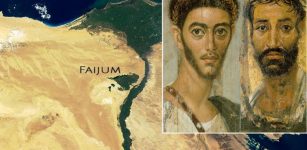 Faiyum Mummies: Long Lost Secrets Of A Mummy’s Portrait
News | Nov 24, 2020
Faiyum Mummies: Long Lost Secrets Of A Mummy’s Portrait
News | Nov 24, 2020 -
 Amazing Thirteen Ming Tombs: Gigantic Stone Animals And Human Figures Were Symbols Of Royal Power
Civilizations | Oct 1, 2018
Amazing Thirteen Ming Tombs: Gigantic Stone Animals And Human Figures Were Symbols Of Royal Power
Civilizations | Oct 1, 2018 -
 Rare 13,000-Year-Old Artifacts And Paleoindian Camp Uncovered in Connecticut Shed New Light On The First Ancient People In America
Archaeology | Mar 18, 2022
Rare 13,000-Year-Old Artifacts And Paleoindian Camp Uncovered in Connecticut Shed New Light On The First Ancient People In America
Archaeology | Mar 18, 2022 -
 Mysterious Relics Can Retrieve Leonardo da Vinci’s DNA And Provide New Information About The Great Renaissance Man
Archaeology | Apr 22, 2017
Mysterious Relics Can Retrieve Leonardo da Vinci’s DNA And Provide New Information About The Great Renaissance Man
Archaeology | Apr 22, 2017 -
 A Stone Age Child Buried With Bird Feathers, Plant Fibers And Fur Investigated In Finland
Archaeology | Nov 2, 2022
A Stone Age Child Buried With Bird Feathers, Plant Fibers And Fur Investigated In Finland
Archaeology | Nov 2, 2022 -
 What Was The Law Of The Innocents?
Ancient History Facts | Feb 10, 2016
What Was The Law Of The Innocents?
Ancient History Facts | Feb 10, 2016 -
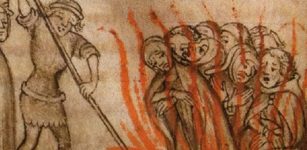 On This Day In History: Knights Templar Arrested – Oct 13, 1307
News | Oct 13, 2015
On This Day In History: Knights Templar Arrested – Oct 13, 1307
News | Oct 13, 2015 -
 Lesicheri Obelisk – Enigmatic Ancient Roman Structure – Bulgaria’s Tallest Surviving Landmark
Featured Stories | Jan 24, 2023
Lesicheri Obelisk – Enigmatic Ancient Roman Structure – Bulgaria’s Tallest Surviving Landmark
Featured Stories | Jan 24, 2023 -
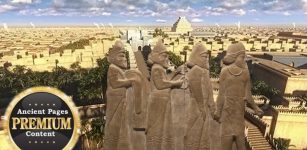 Unknown Ancient God Was Worshipped In Mesopotamia – Sacred Texts And Archaeology Reveal
Civilizations | May 9, 2018
Unknown Ancient God Was Worshipped In Mesopotamia – Sacred Texts And Archaeology Reveal
Civilizations | May 9, 2018 -
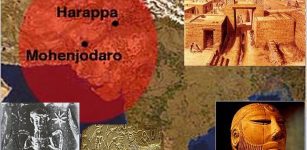 Indus Valley Civilization Far Ahead Of Its Time Has Baffled Scientists For Centuries
Ancient Technology | May 18, 2017
Indus Valley Civilization Far Ahead Of Its Time Has Baffled Scientists For Centuries
Ancient Technology | May 18, 2017


